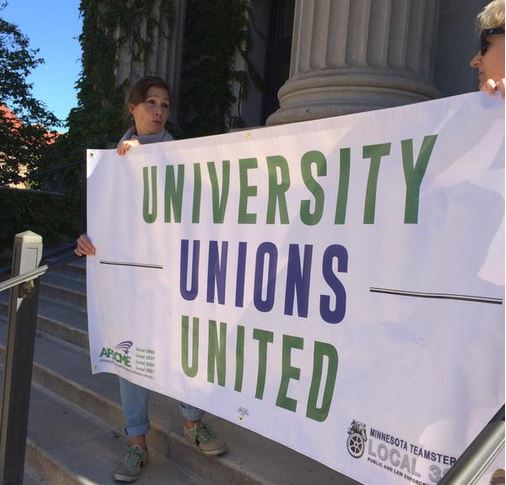The University of Minnesota faculty recently reached the voting threshold of 30% of full-time and part-time faculty to require a vote to establish a union. The Service Employees International Union local 284 (SEIU) is the group organizing faculty, and a vote is expected for later this spring.
The University of Minnesota Academics United website (an affiliate of SEIU Local 284) conveys that faculty are seeking unionization to “restore a strong faculty voice in University governance and give us more power to oppose the erosion of research funding, community connections, teaching resources, and tenure lines.” In addition, the website points out that the union is working for “decent pay” and “job security” for faculty.
If the faculty vote to establish a union this coming spring, they would have the ability to collectively bargain. The Minnesota Academics United website states union members would be required to pay 2.1% of their gross salaries, but no more than 75$ per month per individual. Is a union necessary for faculty?
Salary:
As stated previously, the union is seeking higher wages for faculty. The Academic Planning and Institutional Research study focused on pay of professors completed by the University of Wisconsin Madison completed in 2015 points out that the average University of Minnesota-Twin Cities Full Professor makes roughly $135,000. In addition, the Associate Professor on average makes $93,622, and the Assistant Professor makes $84,864. Both Full Professors and Assistant professors at the University of Minnesota make more than their University of Wisconsin counterparts on average. A Memo sent out by Katherine Hanson (Senior Vice President for Academic Affairs and Provost) and Katheryn Brown (Vice President of Human Resources) states that the July 2015-June 30, 2016 fiscal year will contain a 2% raise was given to instructors and faculty.
Research and Faculty Resources:
Those seeking to organize the Union are offering their disappointment in the University for lack of resources. However, according to President Kaler’s proposed operating budget for the University of Minnesota for 2015-2016, every expenditure the University has made (Research, Instruction, etc.) has increased since the 2012-2013 academic year. The organization’s website does not give specifics as to where resources are lacking, what they mean by “teacher resources,” and what departments are in need of the union the most. In addition, it should be noted that funding for research at the University of Minnesota has increased by almost five million dollars since the 2013-2014.
Tenure:
Their strongest point for unionization is their concern about diminishing tenure. According to The Chronicle of Higher Education, tenure rates for collegiate instructors fell from 57% in 1971 to 31% in 2007. Proponents of tenure argue it allows for professors to implement more creativity in the classroom, thereby improving the educational experience of students. Those who disagree with tenure argue that it doesn’t reward high performance. It remains unclear whether there is a connection between unionization and tenure rates.
Community Partnerships:
Minneota Academics United’s call for increased community connections seems to lack valid facts. According to the University’s Office of Equity and Diversity, the University is partnered with well over 100 community organizations. This list includes but is not limited: language organizations, ethnic organizations, fortune 500 companies, professional sports teams, advocacy groups, LGBTQA groups, and other universities.
Alpha news reached out to both SIEU local 284 for comment on the organization’s vision for Professors, but they did not respond.
So is unionization necessary? Money allocated for research, salaries, and other resources has increased. In addition, the University already has a large and diverse group of community partnerships. Furthermore, unionization will result in a portion of faculty salaries being taken. To stay up to date on future developments pertaining to the prospects of unionization at the University of Minnesota, please subscribe.












